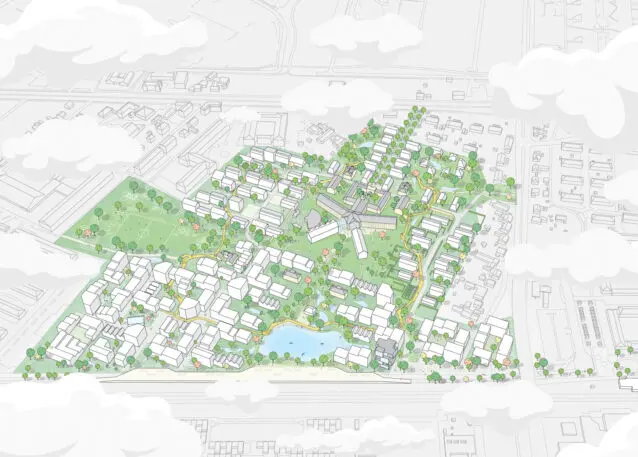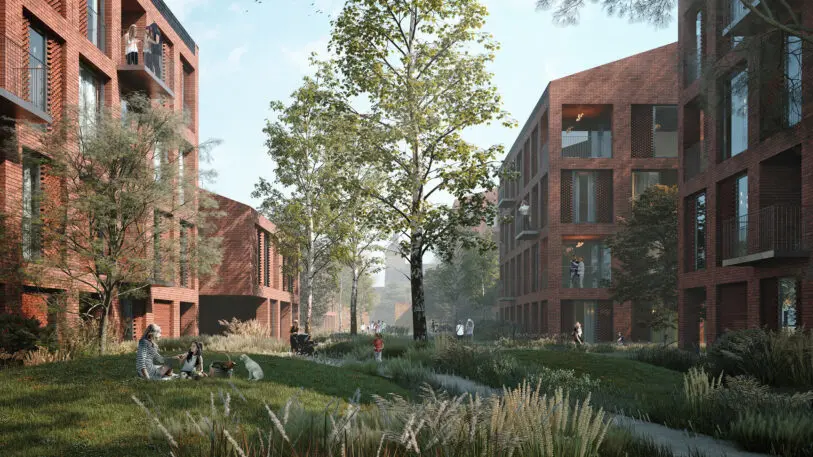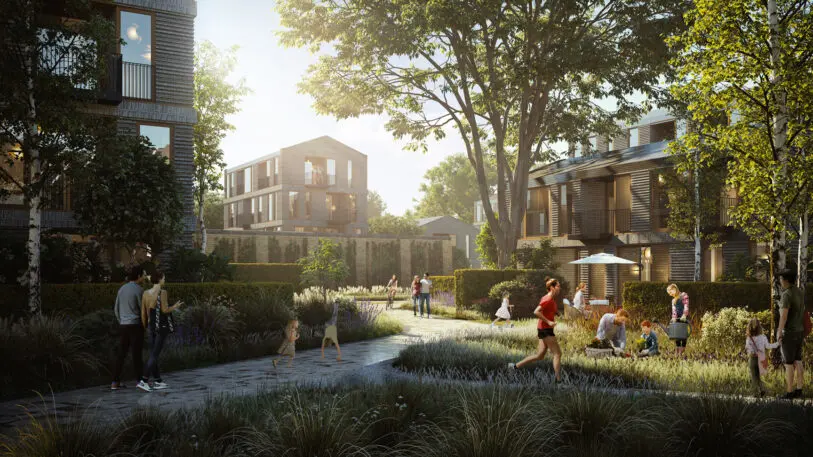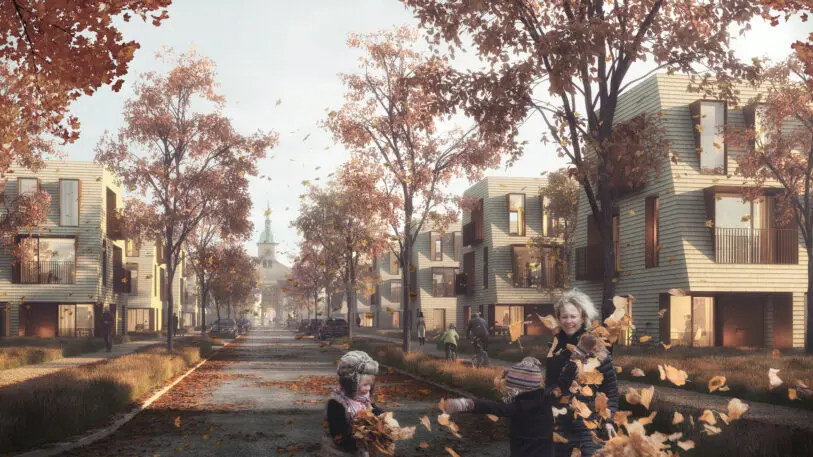When a prison was first built near Copenhagen in 1859, it sat in the middle of empty fields. But as suburban sprawl eventually surrounded it, it’s in an area that needs more housing—and because the prison itself became outdated, the local government now plans to convert the site into a new neighborhood.
A new urban plan now under consideration by the local government in a Copenhagen suburb called Albertslund shows how the site could change. Rather than tearing down the prison, called Vridsløselille, the architects want to reuse it. When the building opened, it used a radical design that designers at the time thought was more humane—prisoners entered through a church and then were isolated from each other, with the idea that this would serve as rehabilitation. (It wasn’t a success.) The concept created a unique star-shaped design.
“We didn’t just want to take it away,” says Kristian Ahlmark, partner and design director at Schmidt Hammer Lassen Architects, which created the proposal along with the landscape architecture firm Bogl. “We like the idea of the transformation, where the walls would still be there and the fact that you could experience this magnificent building, but we would change the content.”

The design uses part of the former building as community space for the new neighborhood, including a fitness center, space for local startups and coworking, and a brewery. “We’ve transformed the entire prison into this gigantic hub for sharing,” he says. Former cells will become small guest rooms that can be used by people living in a series of new apartment buildings nearby. Two other wings of the former prison will be dismantled, along with some other derelict buildings on the site, but the bricks will be reused to build new housing. Around 4,500 people will live in the new, 40-acre district.



The prison was surrounded by trees and green spaces, and as the site is opened up to the public, it will help stitch together surrounding disconnected neighborhoods. “This beautiful forest has been undisturbed and had slowly been allowed to grow around the prison site,” he says. “It’s quite an amazing opportunity to have this kind of setting in the city, where every square meter has been developed.”
Recognize your brand’s excellence by applying to this year’s Brands That Matter Awards before the early-rate deadline, May 3.
